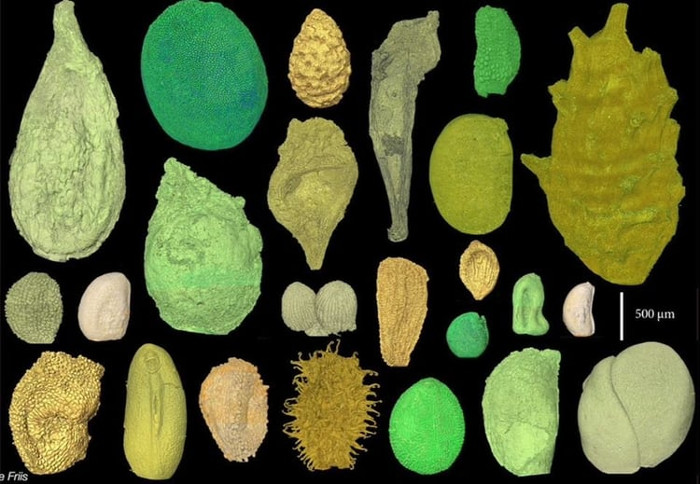Discovered flower seeds hibernating from 110 million years ago
Scientists found clues to ancient flower varieties that existed at the same time as the dinosaurs Ankylosaurus and Iguanadon.
According to Live Science, Swedish scientists have found tiny flower seeds from the Cretaceous dating back 110-125 million years, the oldest known seeds of plants flower. These small seeds help biologists learn about the origins of today's varieties.
These seeds are very small. The largest particle with a diameter of no more than 2.5mm and surprisingly well preserved, can even observe their cell structures. This is the first time scientists have been able to detect embryos, a part of a seed where a plant grows and grows, and tissues store nutrients surrounding them. This rare discovery helps us learn about the development of the Cretaceous seeds , and their differences compared to current plants.
Else Marie Friis, head of a Swedish Natural History Museum research group, has been analyzing a number of fossil monuments of the flowering group of flowering plants found in the ground in Portugal. Home and North America.

The first flower seeds existed since the Cretaceous was analyzed on a CT scanner.(Photo: Live Science).
She and her colleagues used a new simulation technology: X-ray tomography, which allowed them to explore microscopic fossils without damaging the specimen. They cut about 250 seeds of 75 species from different genera, showing embryos and nutritional structures in a very detailed way.
About half of the fossilized seeds are analyzed to contain the full cell structure inside the seed shell and about 50 particles contain part or all of the embryo. Once they have a two-dimensional image of the workpiece, they use software to simulate 3D images and compare the differences in shape and size between particles. In some cases, the similarities between embryos can prove that today's varieties are linked to angiosperms from the Cretaceous period.
"These observations give us a new perspective on the first phase of the first closed-loop plants, which is really important to understand more about the ecosystem of flowering plants in the the first period of the Cretaceous period , " said Friis.
During the Cretaceous period, angiosperms grow strongly and are very diverse. Many new insects also appeared during this period, maybe they helped plants with flowers to flourish in the ancient world.
Previous evidence gathered from today's plant species and fossil plants all show that the first seeded plants grow on the ground. All seeds analyzed in this study are protected as dormant. These embryos are very small, smaller than 0.25mm, so they need to grow further inside the seeds before actually germinating.
"Our findings support the hypothesis that embryos can hibernate within particles, meaning they can wait for the harsh environment to pass and delay development until they meet favorable living conditions. This survival strategy has been passed down to today's flowering plants, " said Friis.
The study was published in the journal Natue on December 16, 2015.
- Fossil flowers were discovered more than 174 million years ago
- Peach seeds more than two million years old are the same today
- The flower is 100 million years old as freshly picked in amber
- The surprising fact about the piece of meat for 15 years is still sold for 73 million
- Discovered 23 million-year-old insect fossils
- Watch the flower seeds sparkling in the morning mist
- Why do strawberries have seeds outside?
- The first flowering tree in the world lives in China
- Detecting exotic seeds located 2,000 years in the tomb
- How to choose melon seeds is not stained with chemicals
- What is Quinoa County? Gold benefits of quinoa seeds for health
- Close-up of the 'life cycle' of dandelion makes many people surprised
 Discovered an ancient centipede fossil 99 million years old
Discovered an ancient centipede fossil 99 million years old Discovered bat-like dinosaurs in China
Discovered bat-like dinosaurs in China Discovered a 200-year-old bronze cannon of the coast
Discovered a 200-year-old bronze cannon of the coast Discover 305 million-year-old spider fossils
Discover 305 million-year-old spider fossils